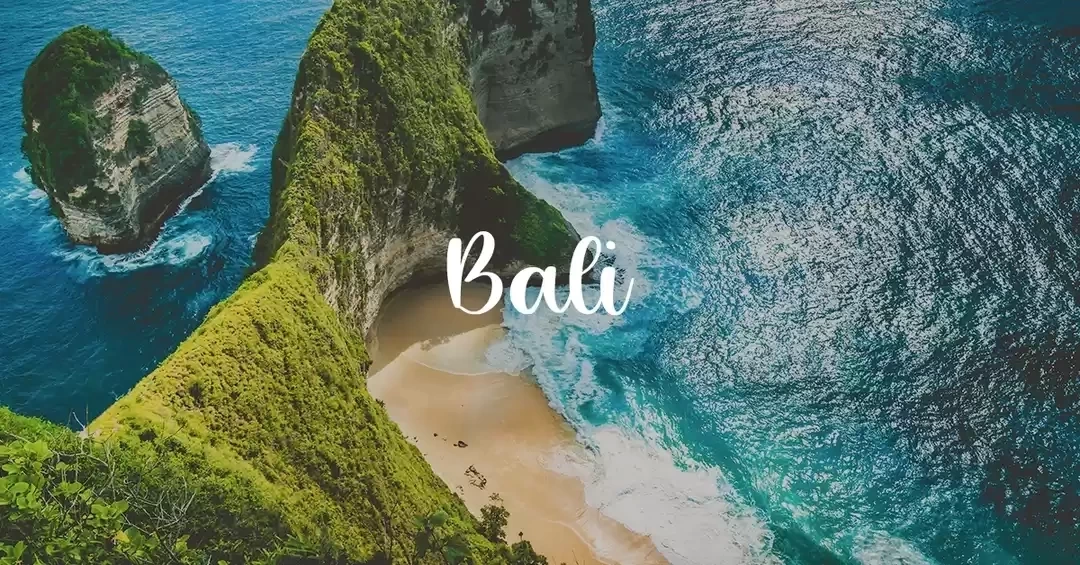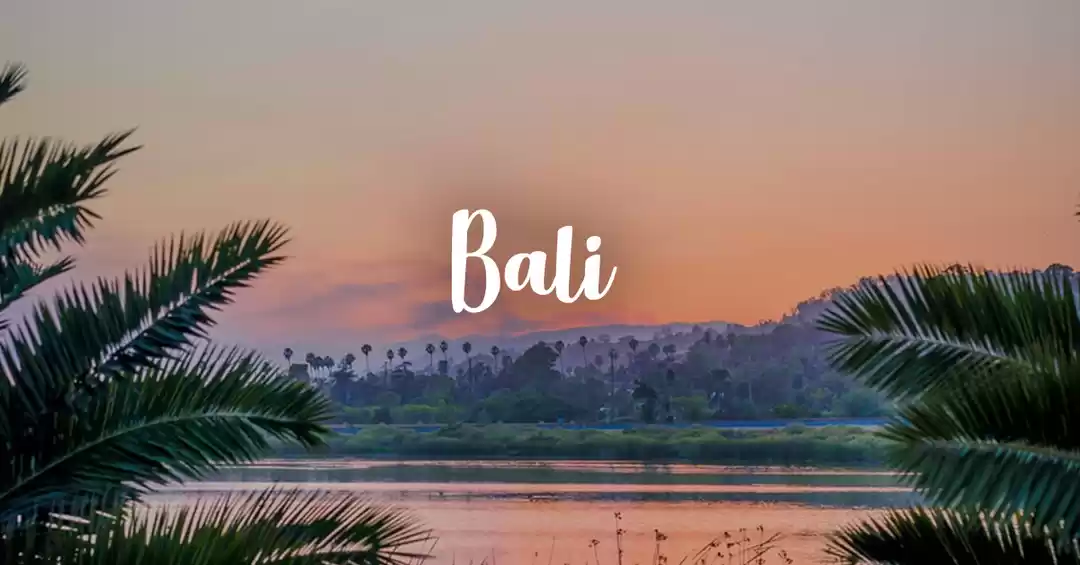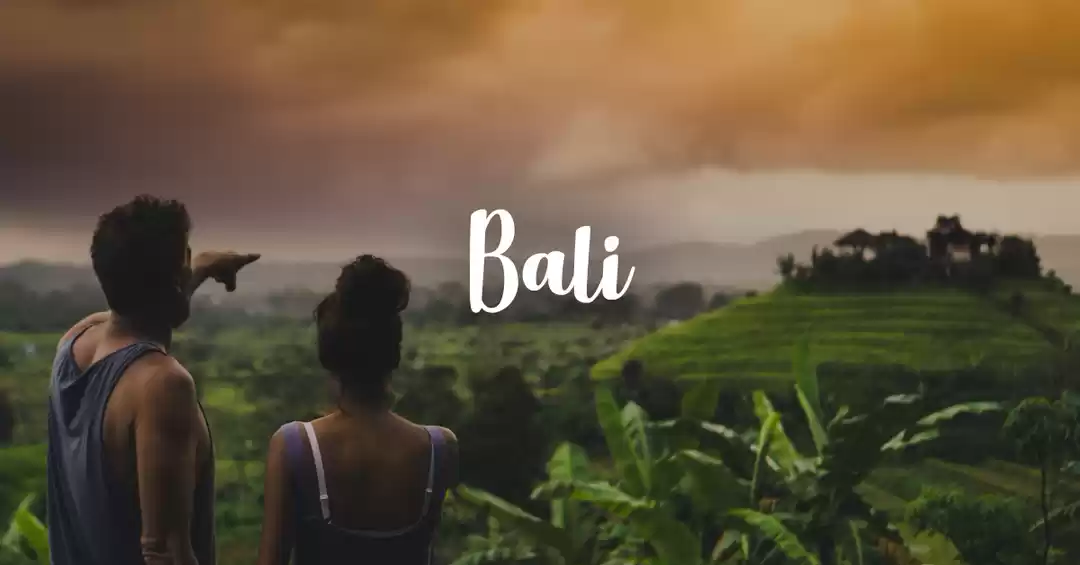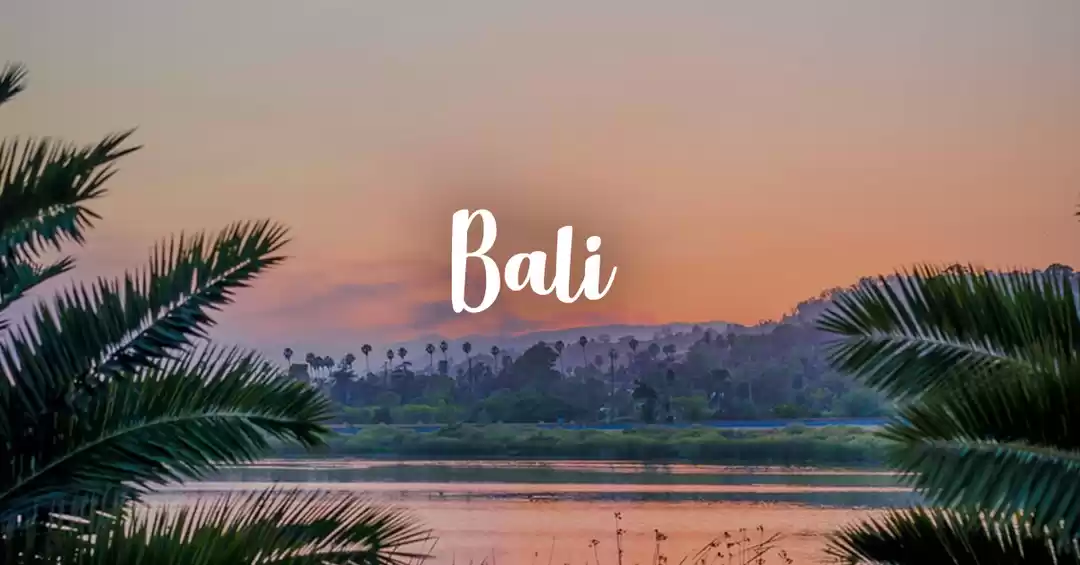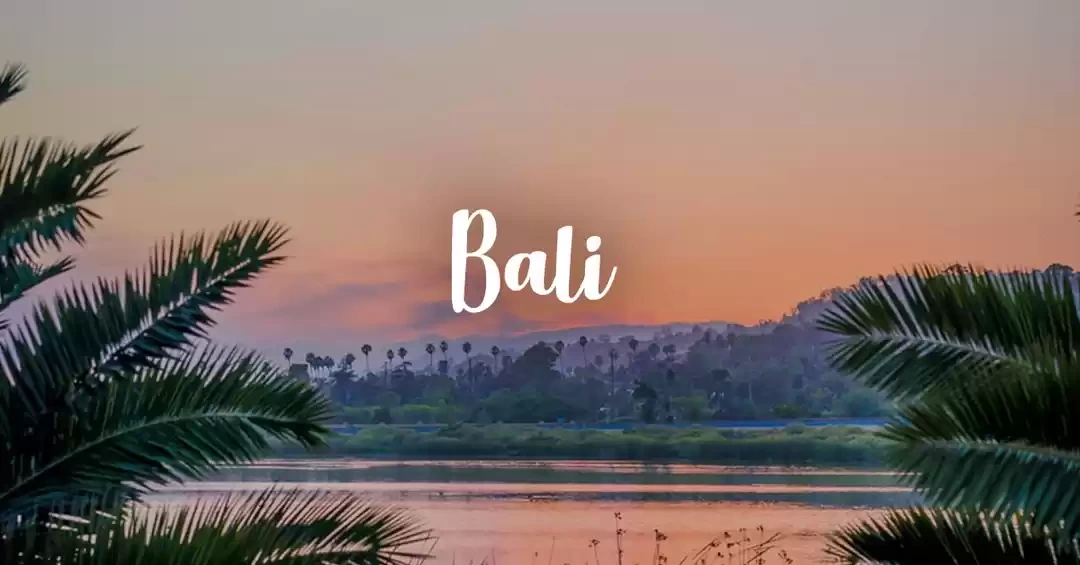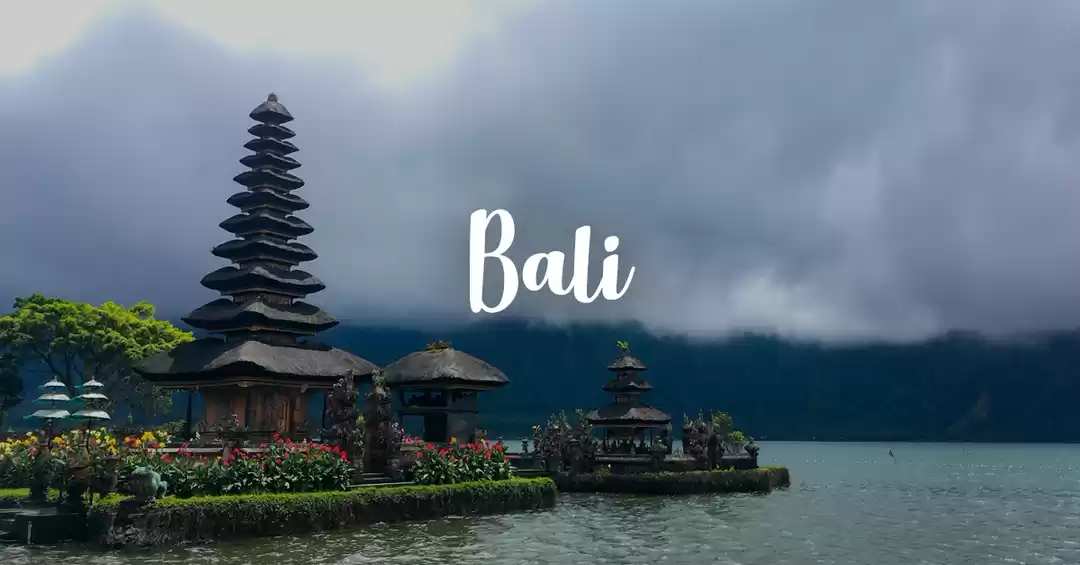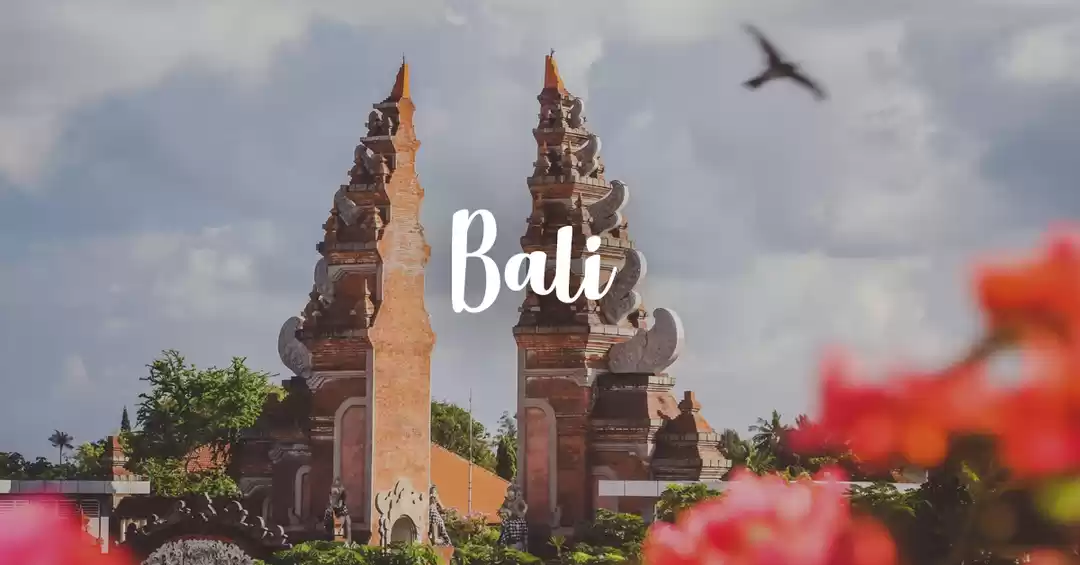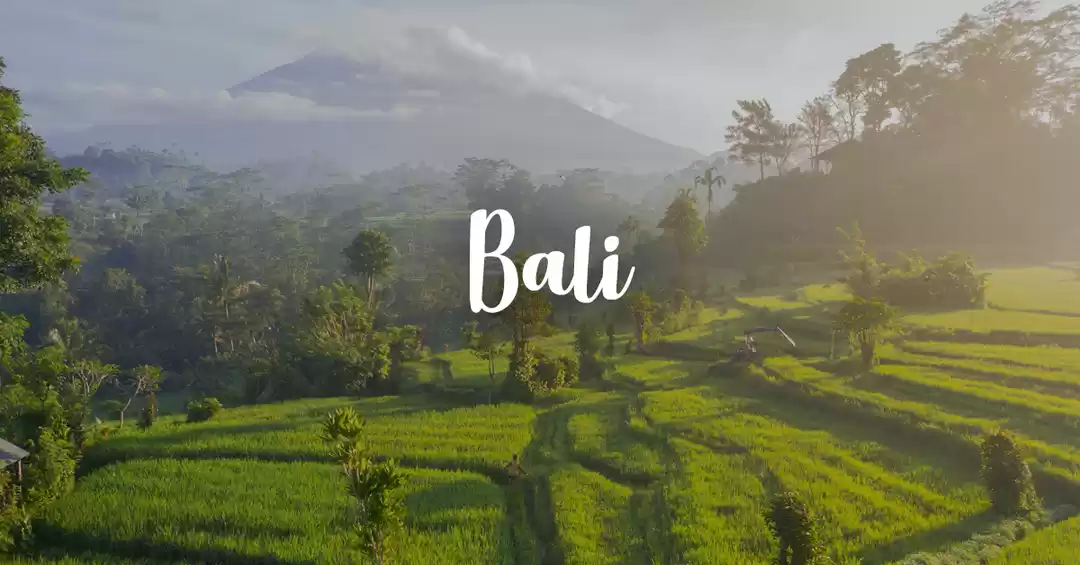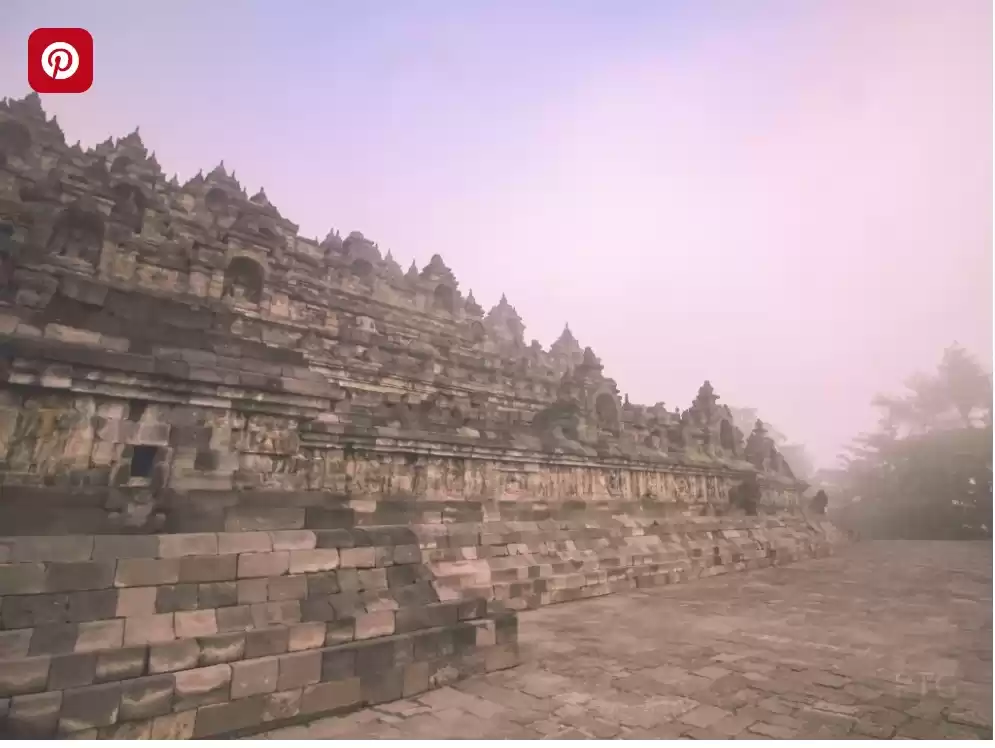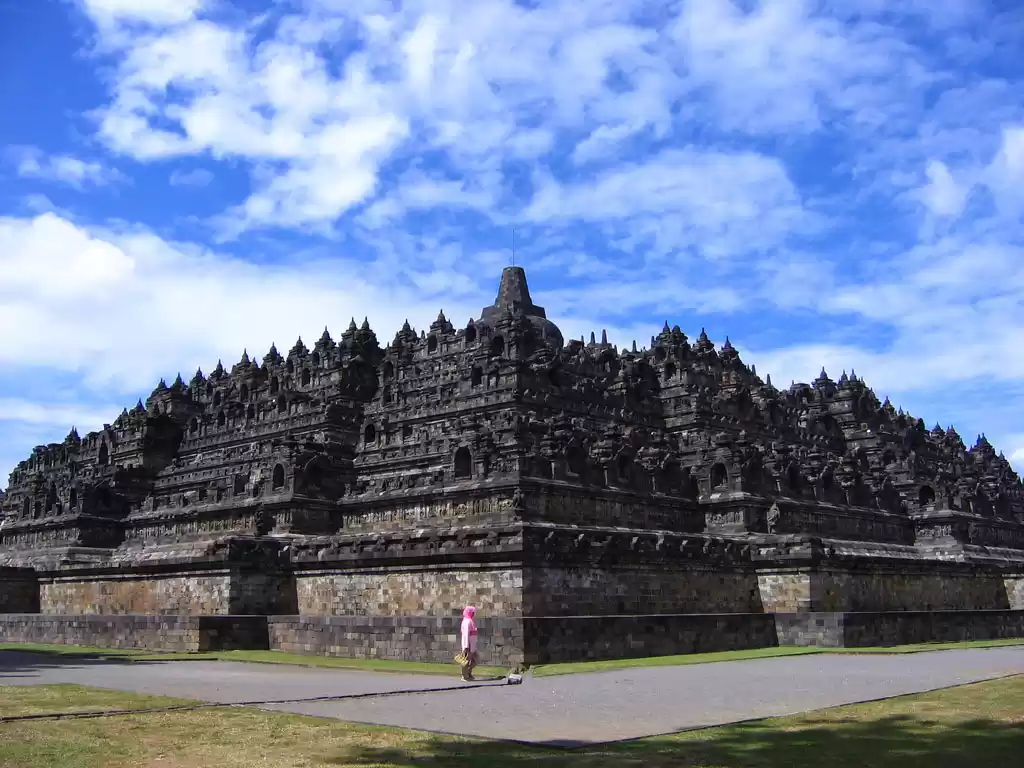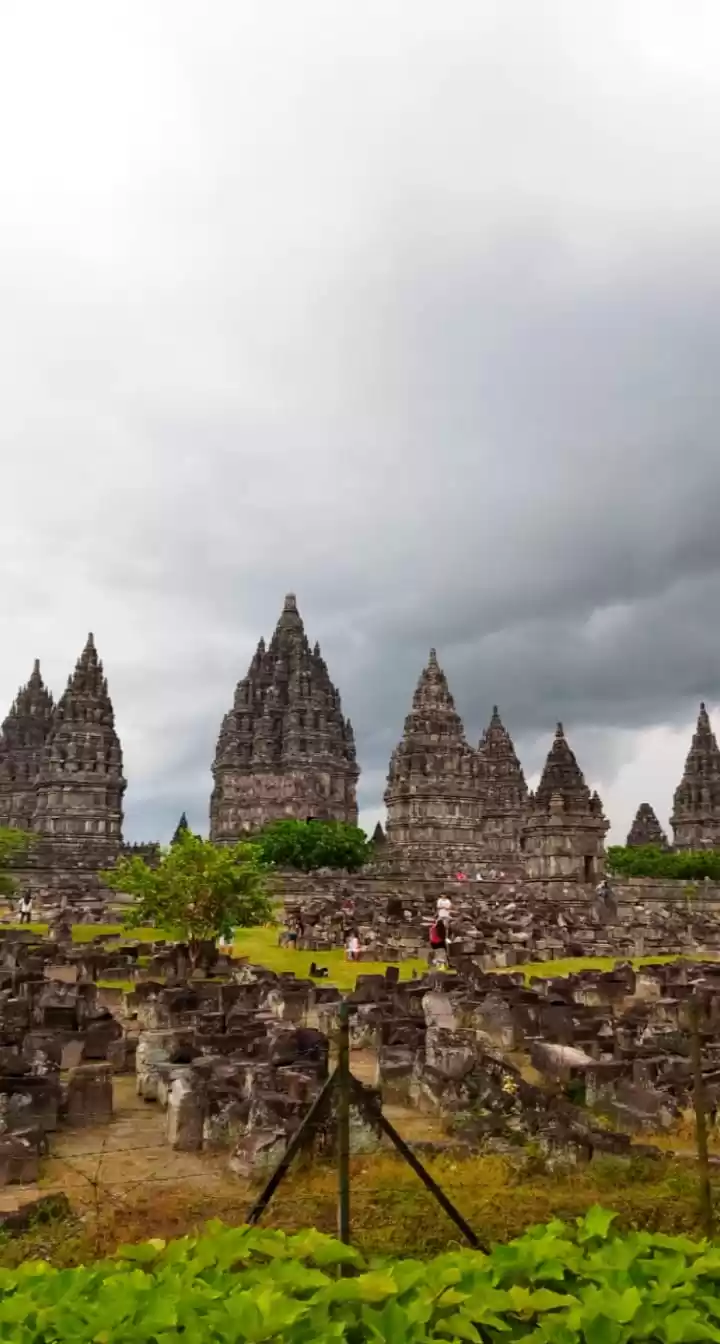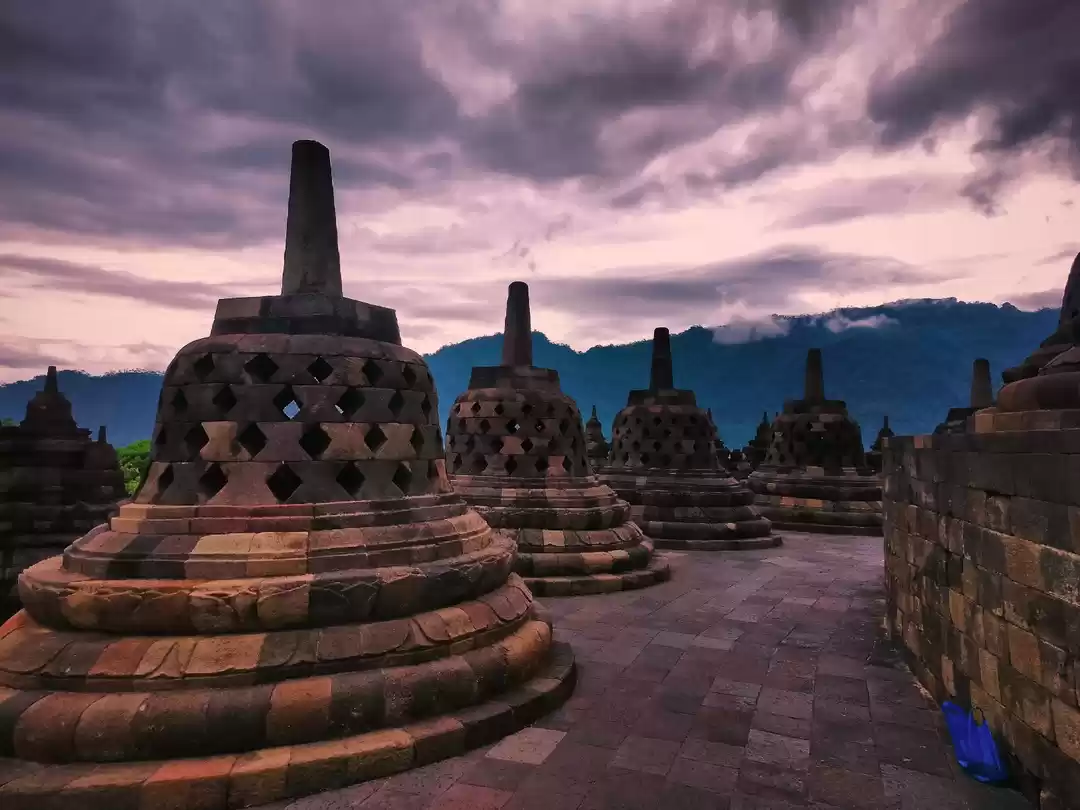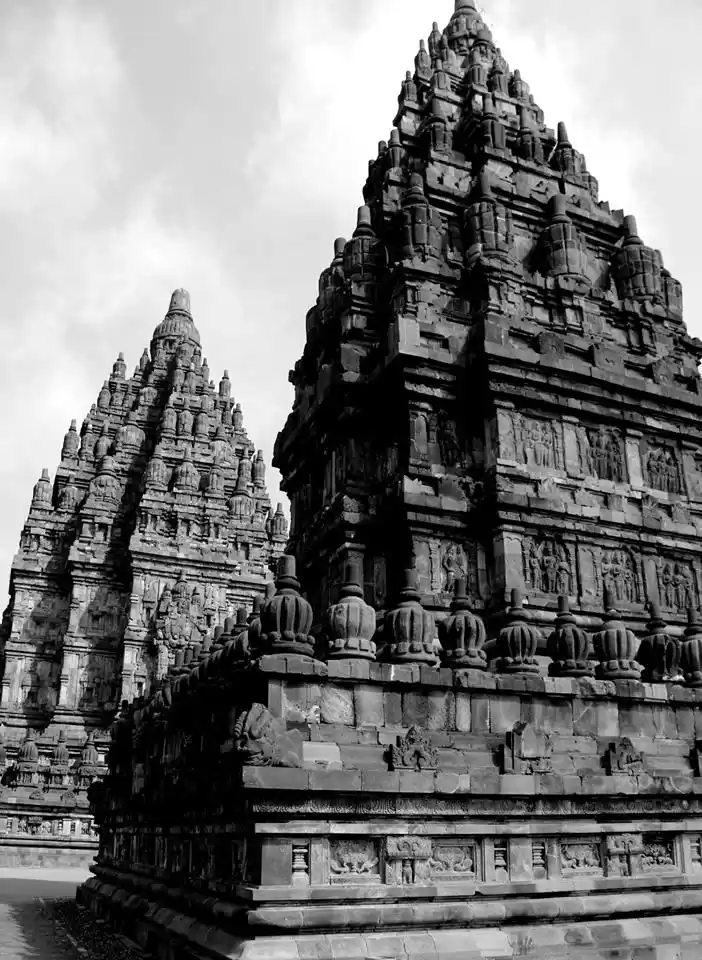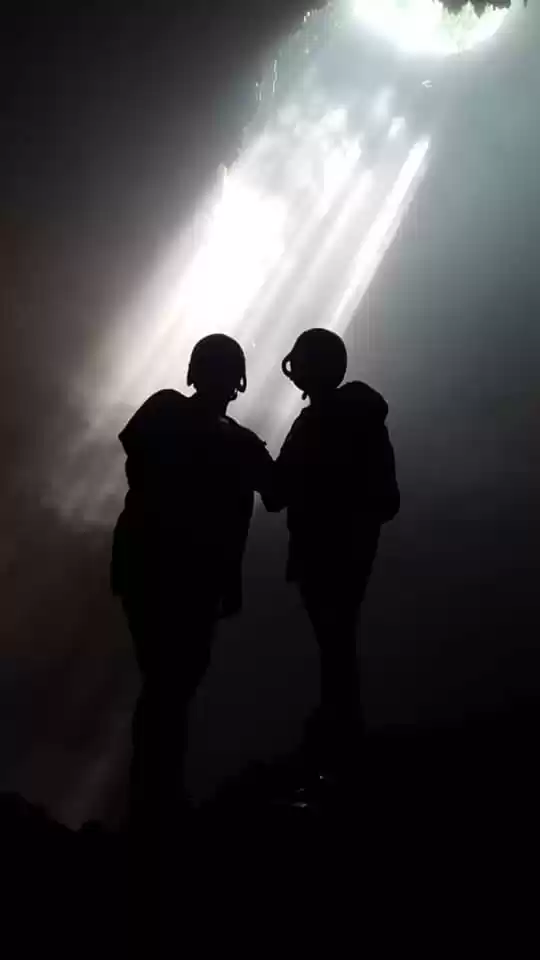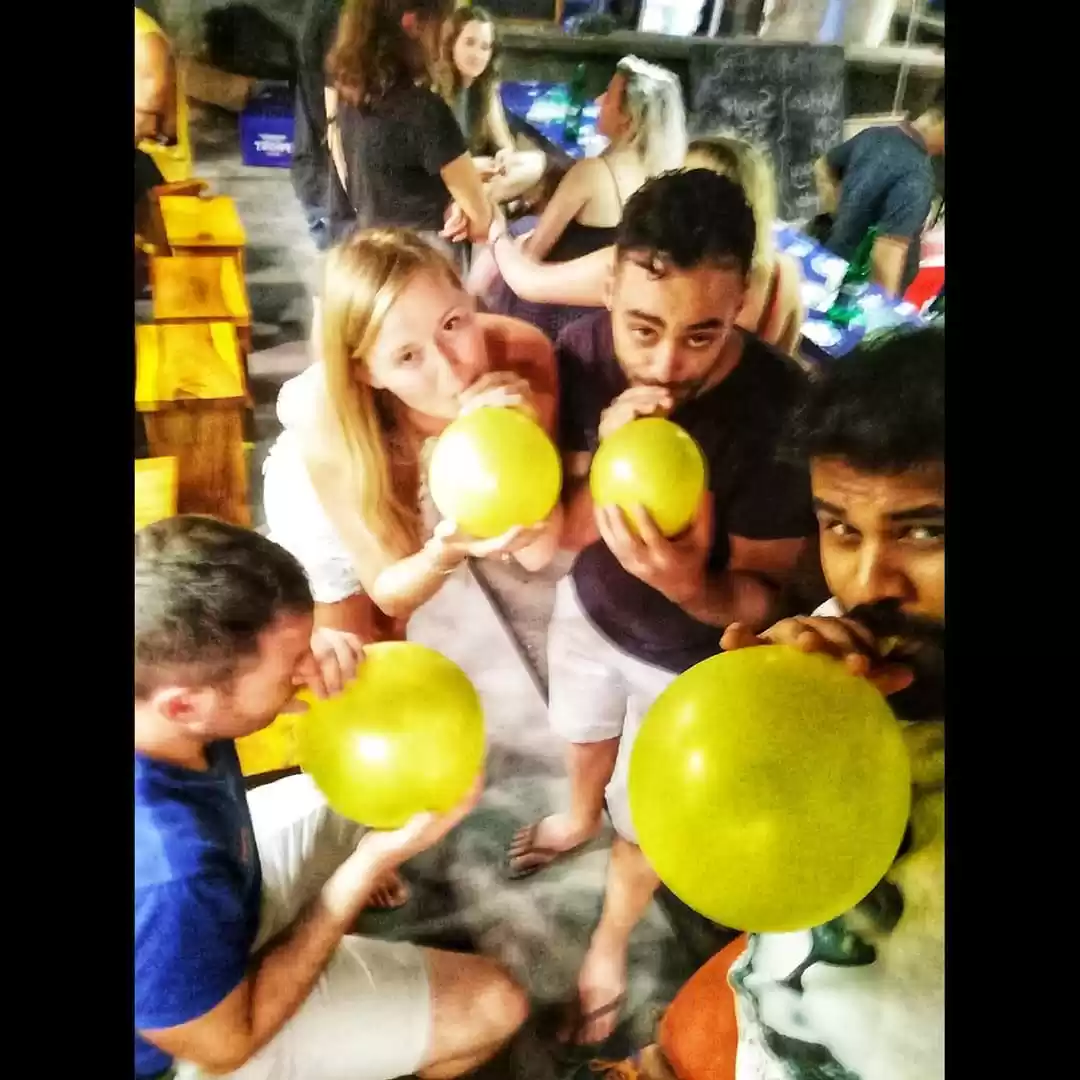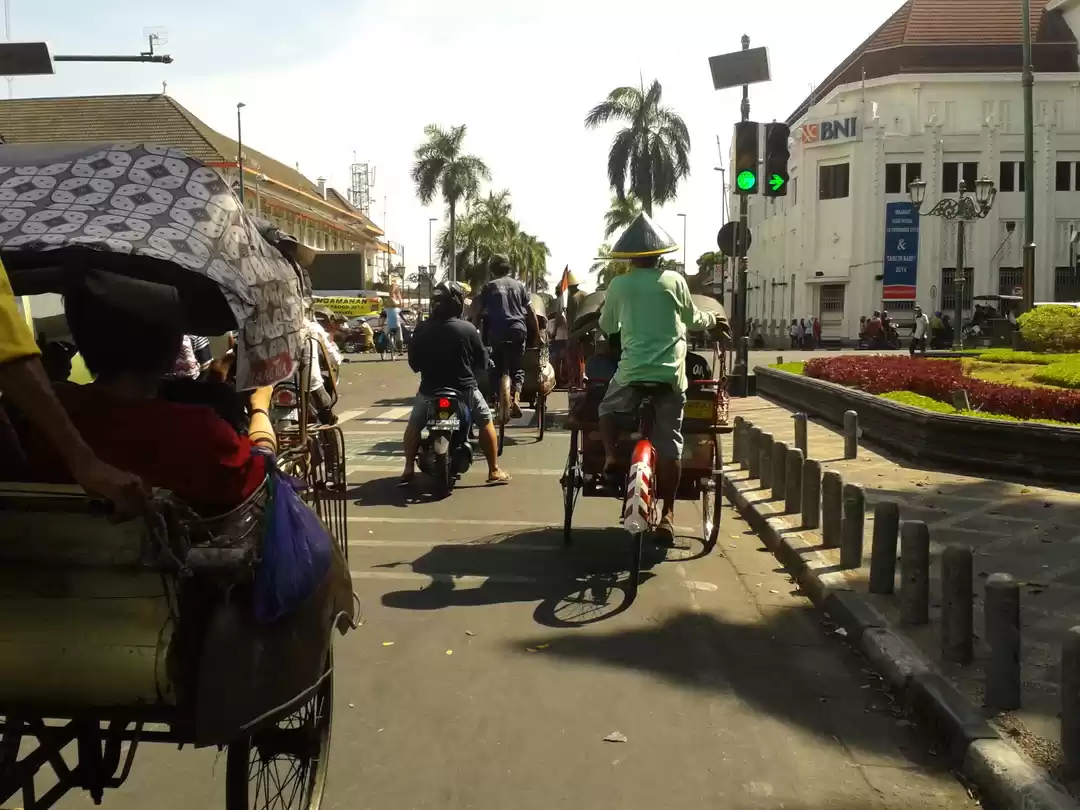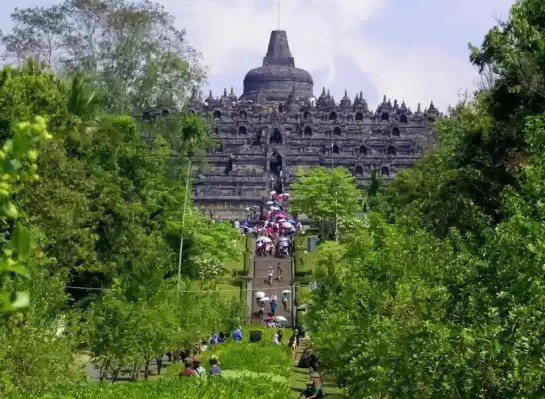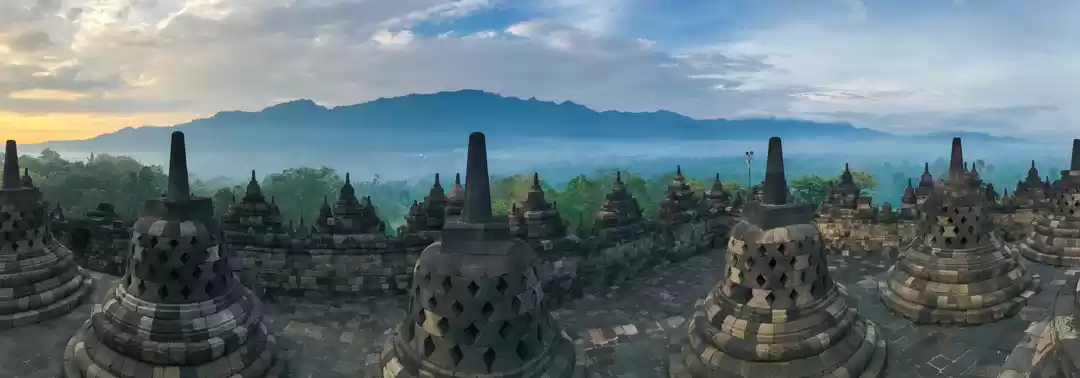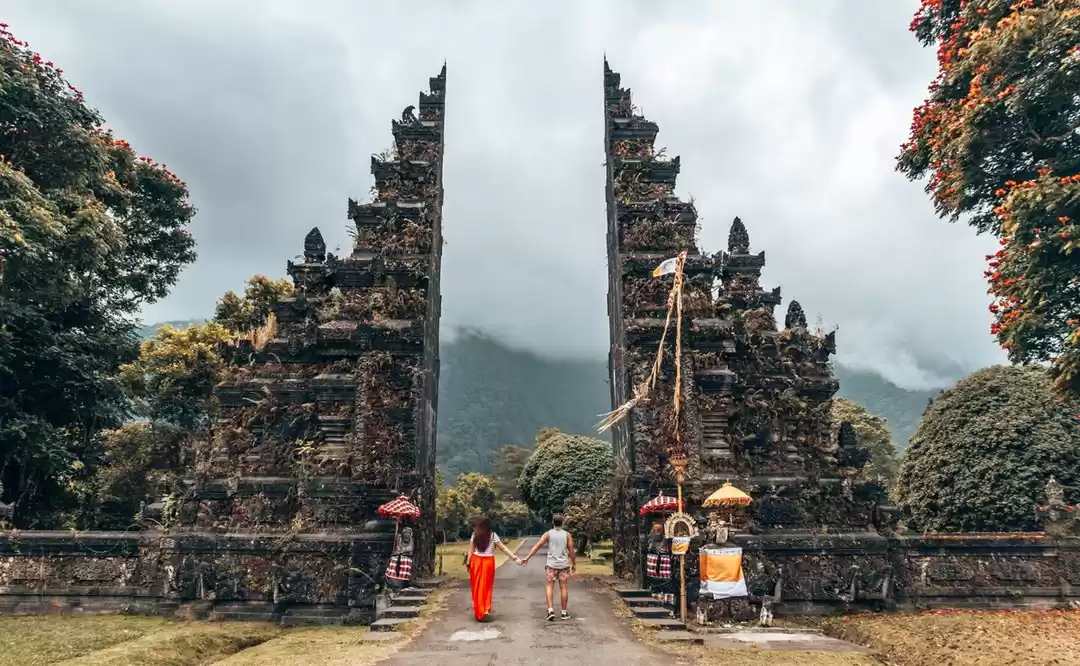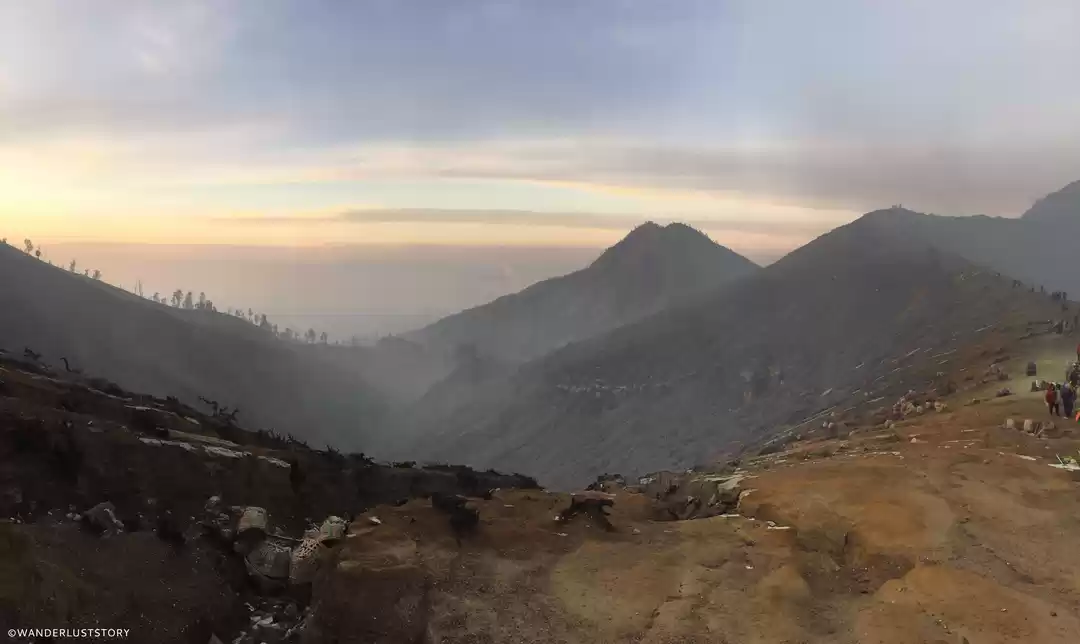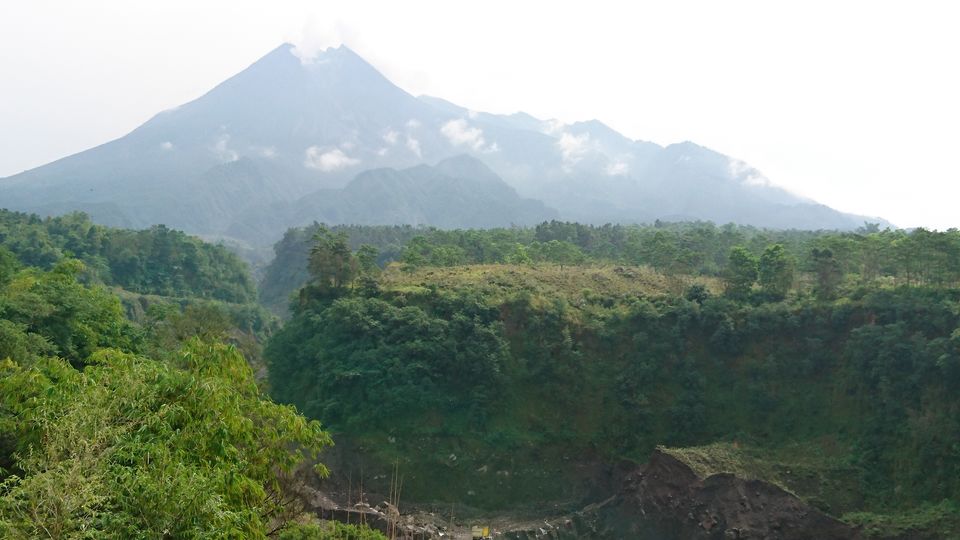
Yogjakarta is so much more than Borobudur. This is my second trip to the city and I got to see so much more. Yogjakarta is also known as Jogja, and is full of culture and flourishing arts. There are many established universities here too. Nearby Solo is also known for its culture and especially batik. I visited these cities on two separate trips but since they're located about 1.5 hours drive from each other and you can visit both cities in one trip, I'll combine these trips into one post.
Here's our summarised itinerary:
JOGJA:
Day 1 - Jalan Wijilan, Jalan Malioboro, Jalan Prawirotaman
Day 2 - Goa Jomblang, Batik Rumah
Day 3 - Borobudur, Mt. Merapi, Prambanan
Day 4 - Bakpia Pathok 25
SOLO:
Day 1 - Candi Ceto, Candi Sukuh, Ndoro Donker Tea House, Grogojan Waterfall, Kampung Batik Kauman
Day 2 - Batik Museum Danar Hadi, Keraton (palace)
First up, JOGJA!
Gudeg in Jogja is sweeter than the ones in Solo. Didn't get to try any in Solo!
I'm not sure about other times of the year, but during Ramadan, there's a night market along Jalan Malioboro. We went into Malioboro Mall which has a supermarket, McDonalds and some cafes. On the day we went, it also happened to have a bazaar selling pretty batik inspired clothes. We did more shopping in this bazaar than along Jalan Malioboro, haha.
We stayed on Jalan Prawirotaman II, at the Greenhost Hotel. It was a nice, clean and very conveniently located hotel. Jalan Prawirotaman I and II have many nice restaurants and cafes, and we just walked to a different one every night. Here are the ones we went to:
1. House of Satay (Jalan Prawirotaman I) - Indonesian Food
2. Via Via (Jalan Prawirotaman I) - Indonesian and Western Food
3. Il Tempo Del Mare (Jalan Prawirotaman I) - BEST GELATO CONE EVER. Please pay this ice cream shop a visit. Extremely super duper highly recommended. The waffle cone is so nice and crunchy.
4. Mediterranea Restaurant by Kamil (Jalan Tirtodipuran No. 24 A, on the other side of Jalan Prawirotaman I) - French, Italian and Mediterranean Food
There's also a lot of nice street art along Jalan Prawirotaman I and II.
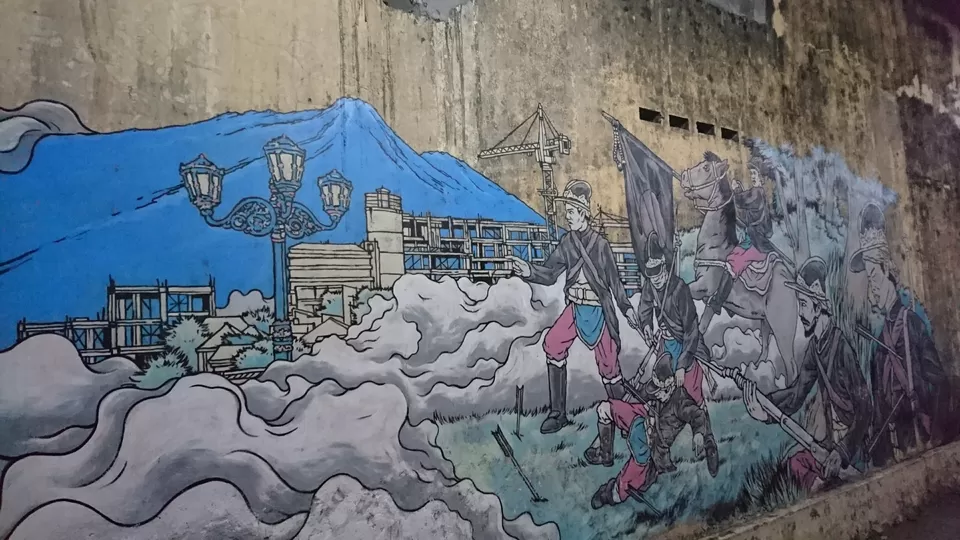
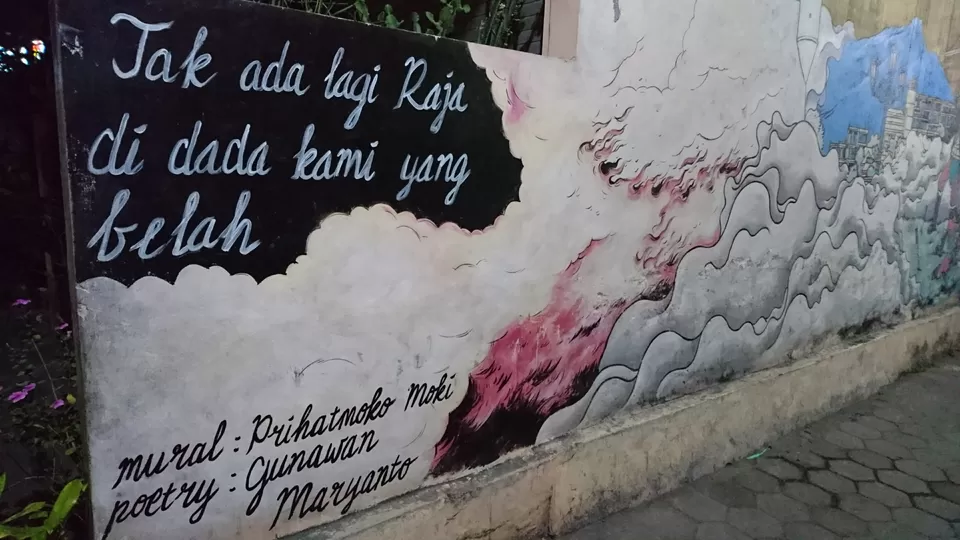
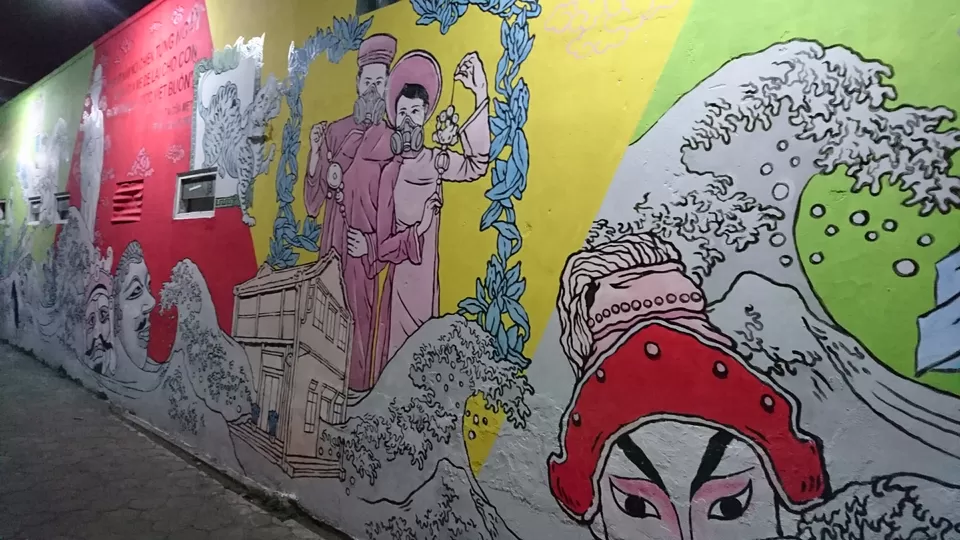
On our 2nd day, we did a bit of adventure stuff. We went for a mini cave exploration at Goa Jomblang! You first get lowered 60m into a sinkhole and walk for about 10mins in the dark rocky cave, and you end up at a gorgeous cavern, called Goa Grubog.






Ahhh the famous Borobudur Sunrise.. The beautiful postcard image of Buddha against the backdrop of the golden sun. Well, we weren't so lucky. We sat and waited.. and the sky just turned bright and that was it. However, it was lovely waiting in the cool morning air, and getting to slowly explore the temple before the heat and crowds came in. I guess witnessing sunrises is all about luck with the weather. At least it wasn't raining! It was very peaceful and I felt as if I could sit on the steps and just gaze at the landscape for a long time.





Yogja is also known for gudeg, a dish that's traditional and typical to Yogja. If you think of sushi when you think of Japan, think of gudeg when you think of Jogja. Gudeg is made by boiling young, unripe jackfruit for a few hours with coconut milk and palm sugar. It's an acquired taste I must say. Some people love it. As for me, I'm pretty impartial. But if you're in Jogja, you must give it a try! We hired a driver and he brought us to Jalan Wijilan, which is an entire street of gudeg stalls. He told us they're all pretty good, so we just stopped at the first one. Here's a picture of our gudeg! It's served with hot krecek (cow skin), telur pindang (egg), tahu and tempe bacem (soya cake), ayam opor or bacem (chicken), and areh gurih (coconut milk dressing). [source] The gudeg is the flaky looking thing 2nd from the left. I don't eat beef, so I told the shopkeeper to skip the krecek (pictured here to the right side of the egg).
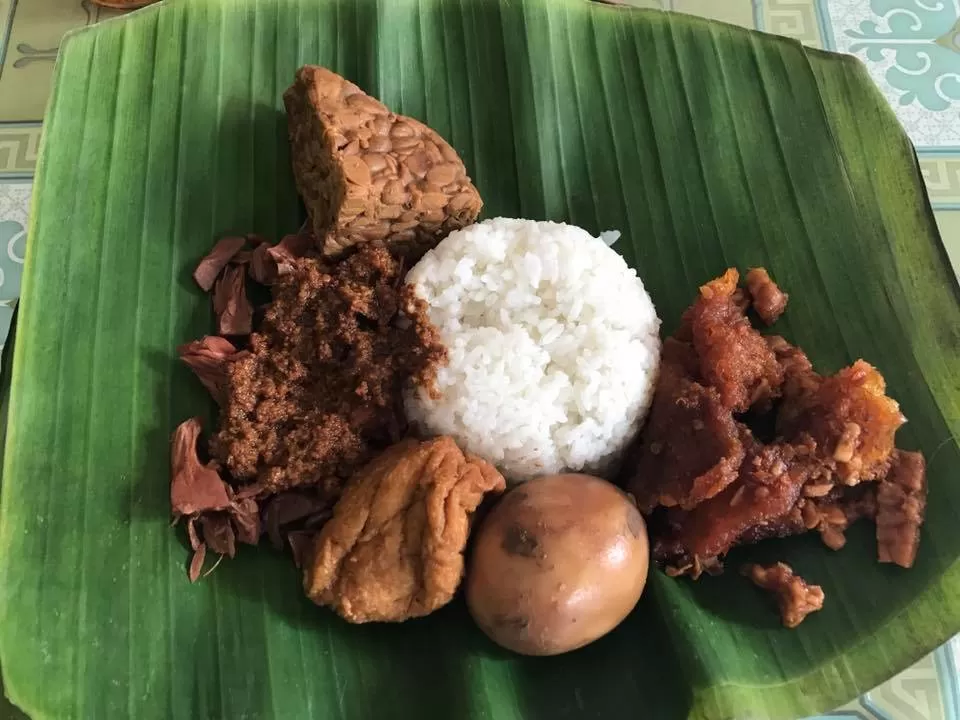
After our lunch, we headed to Jalan Malioboro. Jalan Malioboro is a verrrrry long street of souvenir shops and small malls. They renovated the pedestrian pavements recently so it was nice to stroll along. Many of the shops sell the same stuff and we got bored after a while.

Right at the end Jalan Malioboro, there's a shop called Hamzah Batik. It is also known as Mirota Mall. I highly recommend paying this shop a visit if you want to buy batik cloth, or batik inspired clothes. They have a huge selection and have designs that won't look out of place outside Indonesia (where everyone wears batik). The entire first floor of this establishment sells batik, and the entire second floor sells souvenirs, shoes (with batik prints on them!!), bags and some snacks. If you don't have time to visit the entire Jalan Malioboro, just pop by this shop.
To maintain the beauty of the place and also to ensure the team running the entire operation are able to handle the crowd, only about 25 people are allowed to visit the cave every day.
The Goa Jomblang team are professional and know what they're doing. You pay Rp. 450,000 (about USD 45) per person and that includes safety equipment, boots, helmets, guides to accompany the entire group down, insurance, coffee and tea before the adventure, and a simple lunch afterwards. Bring your own headlamp. The boots and helmets were smelly thus bring your own showercap and socks if you prefer. Socks are also good because in case you can't find boots in your size you can get a bigger size and wear socks to compensate for the extra space. They seem to have many pairs of the bigger sizes - it was hard to find boots that fit my US 5 sized feet.
Since only a limited number of people are allowed to visit the cave each day, do come early. The best time to see the light is from 10-ish to 12 noon, so the tour starts at 10am. Aim to reach Goa Jomblang by 9am. It takes about 1.5 hours to get here from Jogja City and even further if you're staying near Borobudur, so plan your time properly! You can book a tour package online that provides transportation to the caves from Jogja and back, and includes the Rp. 450,000 ticket to visit the cave. We already had a driver so we just made sure we reached the cave by 9am to buy our tickets. You can also drop a WhatsApp message to Pak Cahyo Alkantana (+62 811 117 010), who's managing Goa Jomblang, to make a reservation. But still, try to reach by 9am.
Visiting the caves was a phenomenal experience and I am very happy I got to see something so beautiful. The sunlight was just a single stream when we first saw it at about 11am. Then at about 11.47am when the sun had risen further higher into the sky, the entire cavern filled with light and it was truly magical.
The entire group was lifted manually back up in pairs via a pulley system while harnessed, and I hope the 10 men pulling us had lots of water to drink and rest afterwards.
After our exhilarating morning, we headed back into Jogja city, to Rumah Batik for some more batik shopping.
If you're looking for more things to do around Goa Jomblang, you can check out this blogpost. We decided to rest early tonight as we'd be waking up at the ungodly hour of 3am to see the Borobudur sunrise.
The only way to get in to Borobudur to see the sunrise inside the temple, is through Manohara Hotel. You pay Rp. 450,000 (for non-Indonesian adults) to enter Borobudur at 4.30am, before it is open to the public at 6am. The sun rises before 6am, so going in at the time it is open to the public would mean you'd miss it. The fee also comes with coffee, tea and a light snack. If you stay at the hotel you'll get a discount on the entry fee.
Our driver recommended another site about 3km away from Borobudur to see the sunrise, which had a much cheaper entry fee. But we wanted to be INSIDE Borobodur to witness the sunrise, so we didn't go for that option. But if you don't need to pose with the stupas for your sunrise shot, then you might want to consider doing this. However, I read on some blogs that on a cloudy day, you can barely see Borobudur from this spot and it would look very small.
You can also come in at exactly 6am, and perhaps the sun would not have fully risen yet. It would still be nice, cool, and quiet, with just some very sleepy folks who paid extra money to come in early to witness the sunrise. :)
Borobudur Temple itself is as its name suggests, just the temple. Don't expect a sprawling temple complex like Angkor Wat. It is the biggest Buddhist temple in the entire world and I'm very happy that I got to visit it.
You don't need a lot of time at the temple - I'd say 2 hours at the very least. It involves lots of stair climbing, and the stairs are quite steep so be careful! Also, don't put your hands inside the stupas that house the Buddha statues. I overheard someone telling his son that if you touch it you'll get good luck. RUBBISH! He is not the Taoist God of Fortune okay, you don't just touch the Buddha statue like that. (Rubbing the belly of the God of Fortune is believed to bring wealth).
Since we finished touring the temple by 7.30am, we headed next to Mount Merapi. Mount Merapi, Borobudur, and Jogja City are equidistant from each other, so if you're visiting Borobudur, you can do Mount Merapi in the same day. Hikers aren't allowed on Mount Merapi since the eruption in 2010 that covered the whole city in ash. But you can tour the base of Mount Merapi in a jeep.

Hang on tight because you'll be bouncing around in no time! The roads are very rocky and I have a feeling they don't fix them so that you can feel like you're on an adventure, and the jeep rides are an extra attraction, haha. I'm not complaining because the jeep ride was fun! Rp. 450,000 per jeep for a tour that's 90mins long, and each jeep can fit up to 4 people (if any of you are tall and/or big sized it might be a bit of a squeeze). When you're at the village at the base of Mount Merapi, you'll see many jeep tour shops. Our driver brought us to one that he knew was legitimate. You can choose tours of different durations, and they're priced differently.
One of the stops on the tour was Museum Sisa Hartaku, a house that was heavily damaged by the eruption, now turned into a museum. You can see the extent of the destruction here.



The items in the museum were gathered by a former resident who wanted to show how the eruption affected the lives of the villagers who didn't leave or returned too early.

We also visited the Kaliadem Bunker, which was supposed to shelter people from the eruption, but it was of no use at all as the 2 people who hid in there during the eruption unfortunately did not make it out alive.

Next part of the tour was to visit Alien Rock - supposedly there's an alien-looking face on the rock. Can you spot it?






After being stunned speechless by Mount Merapi, we headed for Prambanan Temple, a Hindu temple in Yogja. Our driver told us we didn't need to hire a guide - he said just know that there are three temples inside dedicated to three Hindu gods - Brahma, Vishnu, and Shiva. And then Google everything else. Haha.. he said different guides tell different stories so just read up everything online.



Prambanan is located within a huge park. There's a museum which is quite interesting and worth a visit if you have time. It tells the history of the temple, how the temple was discovered and the efforts taken to restore and maintain it. There are also some smaller temples within the park but they didn't seem interesting to us so we didn't visit them. You can also watch the Ramayana Ballet (which tells the story of the Ramayana) while the sun sets over Prambanan. But be prepared to spend 4 hours doing this activity - the ticket includes dinner, which lasts 2 hours, and is followed by the actual ballet performance which lasts another 2 hours.
We were exhausted by this time so we just returned to the hotel and napped. We woke up for dinner at Jalan Prawirotaman and rested for the rest of the night.
On our last day, we paid a visit to a bakery that sells a well-known Jogja snack - Bakpia Pathok. Bakpia is a small little green bean paste pastry. Its sweet and the pastry is nice and flaky. It's similar to a snack in Singapore called tau sar piah. Bakpia comes in many other flavours too like cheese, chocolate and nutella, but we decided to get the original green bean paste one, which is called kacang hijau (pronounced ka-chang hee-jow).
We went to the bakery which was in a little alleyway off a bigger street that had many Bakpia shops. The shops were all named Bakpia Pathok 25, 45, 75, 125... but we went to the one called Bakpia Pathok 25 which seems to be the most popular (on the plane we saw many people carrying multiple boxes from Bakpia Pathok 25). The Bakpia was still hot and fresh from the bakery. Yummy!
We had a very good driver in Jogja. If you're thinking of hiring a driver, I recommend the one we used! Send me a PM.
We flew into Solo the night before, and started the first day's activities first thing in the morning. The candis (temples), teahouse and the waterfall are located near each other, and are about 1 hour away from Jogja. So I don't recommend starting your visit to them in the late morning or early afternoon. If you're following this itinerary for example, and you're heading in from Jogja in the late morning or early afternoon, I recommend doing the Day 2 activities of my itinerary on Day 1 instead.
Candi Ceto is located on top of a mountain and the journey to the temple is very enjoyable. As you get further away from the city the buildings get smaller and the air gets cleaner. When you start taking the winding mountain roads up, wind down your car windows and enjoy the cool breeze.



Candi Ceto is a Javanese-Hindu temple that dates back to the 15th century. The temple ruins are well preserved and well maintained. Our driver told us that many Balinese people visit this temple because it's up on the mountains and thus nearer the sky and the gods.




Take a walk behind the temple and you'll find the shrine to the goddess Saraswati, another temple Candi Kethek, and a waterfall. You'll need to pay an additional Rp. 3,000 to see this area. It's a nice stroll so I recommend checking it out! Candi Kethek is also pretty cool. Read this blog post for more details. It also has pictures taken on a lovely sunny day.


We passed by Ndoro Donker Tea House on the way to the next temple so we decided to stop by for a light meal and some tea of course. I didn't know there were tea plantations in Solo too, but I guess since this spot is at a higher altitude and the weather nice and cool, it's suitable for tea plantations.
The tea house is a huge restaurant - I feel like I'm in someone's house with a large garden and front lawn. It overlooks some tea plantations. The perfect view to accompany your nice piping hot cuppa tea.




I had rose tea which was light and tasty. The food was decent too, and it came in small portions. They also sell their tea as well as teapots, cups, etc.
After this, we paid a visit to Candi Sukuh, also a Hindu temple. The temple grounds are very well maintained and the reliefs were very fascinating.




Still in this region, we visited Grogojan Waterfall (Air Tujun Grogogan) next. We had to walk along a slightly rocky pathway and up some steps before reaching the waterfall.


It was in the middle of the afternoon by now, but luckily we still had time (and energy) to visit Kampung Batik Kauman. By the time we got back to Solo city it was late in the afternoon. Thankfully we managed to catch the batik village while there was still some light. This is an entire village with many many shops selling batik. Solo is well known for their batik so I recommend visiting this place!

We visited this shop called Batik Gunawan Setiawan. It has a very good selection of batik cloth and clothes made of batik. They also have a room where valuable and vintage batik are displayed. One of the salesgirls was very helpful and I admit I was persuaded to buy an extra piece of cloth because of her! She was not pushy at all and showed us how to use the cloth to make into clothes and to display.

If you have more time, do explore all the little lanes and check out the shops!
Visiting the Danar Hadi Batik Museum was really an eye opening experience. I learned a lot more about batik and got to see some amazing pieces. Photos are not allowed so we didn't take any, but we were so fascinated by the different types of batik from all around Indonesia that we didn't bother whipping out our phones anyway. We had a good guide who explained how to tell the difference between batik from Jogja and batik from Solo. The owner named the museum and shop "Danar Hadi" after his wife. He owns 10,000 pieces of batik and displays 1,000 of them in the museum. And he changes the batik around when he feels like it.
There's also a restaurant next to the museum and the food's pretty good.
We visited the palace next, and honestly I wasn't very impressed. It was old and not well maintained at all. I felt like I was stepping into Miss Havisham's house. I think you can give this place a miss.


There was some weapons, carriages, pictures of the Pakubuwono family (the royal family) on display.
We stayed at the Alila Solo, and it was GREAT! Their other establishments include that famous gorgeous one in Bali. The rooms, facilities, service, food, and everything was so good. I'd go back just to stay in the hotel. (Also, it's probably the only Alila we can afford, haha) I'm still daydreaming about that fried chilli tempe I ate each morning at breakfast..yum..


Overall, the trip to Solo was amazing and I enjoyed it very much. We also had a good driver and if you'd like his contact details, please send me a PM. He can do pick-ups from Jogja, and then drive you around Solo.
There's so much more to explore around Indonesia, I can't wait!



